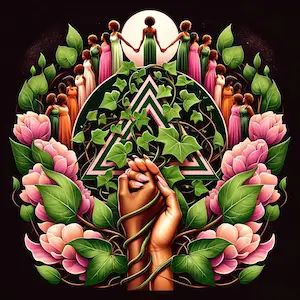Embark on a rhythmic journey across the vibrant landscapes of Africa, where the soulful melodies and powerful rhythms of African chants resonate. This profound musical form is not just an art; it’s the heartbeat of a rich cultural heritage, echoing through time and space. African chants are a tapestry of sound and spirit, weaving together the stories, traditions, and collective wisdom of a continent with a history as deep as its music. From the ceremonial songs that mark life’s milestones to the warrior chants that echo the bravery of ancient battles, and the healing melodies that connect the earthly with the divine, African chants are a testament to the enduring power of music as a means of expression, communication, and unity.
This article delves into the intricate world of African chants, exploring their diverse types, cultural significance, and the indelible impact they have on communities across the continent and beyond. Join us as we celebrate the vibrant pulse of Africa, captured in the rhythm of its chants.

Table of Contents
The Roots of African Chants
Embarking on a journey to uncover the roots of African chants is akin to exploring a vast and intricate tapestry, woven with threads of history, culture, and spirituality. These chants, steeped in the richness of the African heritage, trace their origins back to the very cradle of humanity.
In the beginning, African chants were more than just a form of musical expression; they were a fundamental means of communication within and across communities. The dawn of these chants can be traced back to ancient times when storytelling around the fire was not just about entertainment but a vital means of preserving history, imparting wisdom, and forging communal ties. Elders and storytellers would use chants as mnemonic devices, ensuring that the tales of their ancestors, the laws of the land, and the wisdom of ages were passed down intact from one generation to the next.
These chants were deeply embedded in the rituals and ceremonies of African societies. Each tribe, each community, had its unique set of chants, specifically crafted to suit various occasions. There were chants for harvest, for rain, for hunting, and for war. Each chant carried within it the heartbeat of the community, echoing its hopes, fears, joys, and sorrows.
The roots of African chants are also firmly planted in the continent’s spiritual soil. In many African cultures, chanting is considered a bridge between the mortal realm and the spiritual world. The rhythmic drumbeats and harmonious vocals were believed to summon ancestral spirits, seek divine favor, and even heal the sick. The chanters, therefore, were not just singers or storytellers; they were mediums, healers, and custodians of their community’s spiritual well-being.
Moreover, African chants are a testament to the continent’s linguistic diversity. Africa, with its thousands of languages and dialects, showcases this diversity through its myriad of chants. Each ethnic group has its unique style of chanting, reflecting its linguistic, cultural, and musical traditions. The chants are a rich mosaic of sounds and styles, from the guttural tones in the chants of the Maasai warriors to the melodic harmonies of the Xhosa lullabies.
In essence, the roots of African chants are as deep and widespread as the continent itself. They are a profound embodiment of Africa’s history, its diverse cultures, its spiritual beliefs, and its innate connection to the rhythm of life. Understanding these chants is not just about appreciating African music; it’s about immersing oneself in the soul of the continent.
Ceremonial Chants
Ceremonial chants hold a place of honor in the tapestry of African music, serving as the vocal soul of the continent’s most profound rituals and celebrations. These chants are not mere melodies but are woven into the fabric of African life, marking the rhythm of existence from birth to death, from planting seeds to harvesting crops. Each note and rhythm in these ceremonial chants carries with it the weight of tradition, the joy of the present, and the hopes for the future.
In the vibrant landscape of African ceremonies, chants act as a bridge connecting the physical and spiritual worlds. They are an essential element in rites of passage, where each life transition is honored and celebrated through song. For instance, in naming ceremonies across various African cultures, chants are used to welcome a newborn into the community, invoking blessings and protection from the ancestors. The lyrics often reflect the community’s values, the pride in lineage, and the collective joy of adding another member to the family.
Weddings in Africa are a kaleidoscope of color, dance, and music, with ceremonial chants playing a central role. These chants celebrate the union of two individuals and two families, weaving the couple’s individual stories into the community’s larger narrative. In some cultures, specific chants are sung by the bride’s and groom’s families, symbolizing the merging of different heritages and the formation of new bonds. The rhythm and melody vary from solemn and sacred to joyful and celebratory, mirroring the range of emotions that weddings evoke.
Furthermore, African ceremonial chants are profoundly integral to initiation ceremonies, where boys and girls transition into adulthood. These chants often carry teachings and wisdom from the elders, preparing the initiates for the responsibilities and roles they are about to assume. The lyrics may recount the virtues, the history, and the legends of the tribe, embedding a sense of identity and pride in the young adults.
In the circle of life, even the end is marked with chants. Funeral chants in African cultures are a powerful expression of grief, remembrance, and respect for the deceased. They are a communal sharing of loss, a collective process of mourning that also celebrates the life and legacy of the departed. The chants are often poignant, evoking the memories and the spirit of the person who has passed away, ensuring that their legacy continues in the hearts and minds of the living.
Moreover, ceremonial chants are not limited to life’s major milestones; they are also a staple in seasonal festivals and communal celebrations, such as harvest festivals. These chants express gratitude to the deities and the ancestors for the bounty of the land, reinforcing the bond between the people, the earth, and the spiritual realm.
In essence, ceremonial chants in Africa are a rich and dynamic expression of the continent’s cultural and spiritual heritage. They are a living art form, evolving with the times yet deeply rooted in the ancient rhythms of life. To engage with these chants is to experience the heartbeat of Africa, to be enveloped in a world where every life moment is embraced, celebrated, and sanctified through the power of song.
War and Warrior Chants
In the annals of African history, war and warrior chants stand as formidable testaments to the courage, strength, and unity of warrior cultures. These chants are not mere musical compositions but powerful tools of motivation, communication, and spiritual invocation, woven intricately into the fabric of combat and valor.
The essence of African war chants lies in their ability to encapsulate the spirit of the warrior ethos. They are the echoes of the battlefield, resonating with the beat of the drums and the pulse of the heart. As the warriors prepare for confrontation, these chants serve multiple purposes: they fortify courage, synchronize movements, and instill a sense of indomitable unity among the combatants.
Each tribe and culture has its unique style of war chant, tailored to its traditions and combat techniques. For instance, the Maasai of East Africa are known for their deep, guttural chanting, a sound as formidable as their reputation as fierce warriors. Their chants are a mix of vocal prowess and rhythmic intonation, designed to embolden the warriors and intimidate their adversaries even before the spears are hurled or the shields raised.
Similarly, the Zulu warrior chants of Southern Africa are a powerful expression of might and solidarity. These chants, often accompanied by vigorous, synchronized movements and the thunderous sound of the Zulu drums, serve as a prelude to battle, a ritual that prepares the mind, body, and spirit for the impending conflict. The lyrics often invoke the ancestors’ spirits, seeking their protection and guidance, and recount the deeds of legendary heroes, inspiring the warriors to emulate their valor.
War chants also serve as a medium of strategy and communication during combat. The rhythm and tempo can signal different tactics, directing the warriors to advance, retreat, or regroup. In the thick of battle, when the dust and din obscure sight and sound, the steady beat and familiar cadence of the chant can guide the warriors, helping them maintain formation and focus.
Moreover, these chants are an integral part of the post-battle rituals. Victory chants celebrate the bravery of the warriors and the favor of the ancestors, while chants in the wake of defeat serve as a solemn remembrance of the fallen and a vow to endure and reclaim honor.
In contemporary times, although the battles have changed, the legacy of war and warrior chants continues. These chants are a significant cultural heritage, preserved and performed in cultural festivals, ceremonies, and through the teachings of elders to the younger generations. They remind us of the valor, unity, and resilience that have shaped the histories of African nations.
In conclusion, war and warrior chants in Africa are much more than elements of traditional music. They are the narrators of history, the bearers of culture, and the guardians of ancestral wisdom. These chants tell the stories of courage, unity, and the unbreakable spirit of the warrior, stories that continue to resonate through the ages, as powerful and compelling as the beat of the drum that accompanies them.
Storytelling Chants
Storytelling chants in Africa are not merely a form of musical expression; they are the vibrant threads that weave the rich tapestry of the continent’s oral tradition. Serving as the custodians of history, culture, and moral values, these chants are a crucial medium through which the wisdom of the past is transmitted to the present and preserved for the future.
The art of storytelling through chants is an ancient practice, deeply ingrained in the fabric of African societies. Each chant is a living narrative, encapsulating the tales of creation, the exploits of heroes, the wisdom of the ancestors, and the laws of the land. These stories are not passively told but are dynamically performed, engaging the listeners in a captivating dance of words, rhythms, and melodies.
Griots, or traditional storytellers, are the esteemed bearers of this tradition. Equipped with their instruments, such as the kora or the balafon, griots masterfully blend music with poetry, breathing life into each tale. The storytelling chants are more than mere entertainment; they are a communal experience, a shared journey into the heart of culture and tradition. As the griot chants, the audience is transported to ancestral lands, battles are fought anew, and ancient wisdom echoes in the modern age.
The structure and content of storytelling chants vary widely across different cultures and regions. In some traditions, the chants are epic narratives, recounting the heroic deeds of legendary figures. These epic chants, like the famous Sundiata Epic of the Mande people, preserve the historical and cultural heritage, instilling a sense of identity and pride in the listeners.
In other contexts, storytelling chants are parables and fables, woven with moral and ethical lessons. These chants serve as educational tools, imparting valuable life lessons and social norms to the younger generations. Through the captivating narrative and the rhythmic melody, complex concepts of morality, justice, and community are made accessible and engaging.
Furthermore, storytelling chants are a medium of social commentary and satire. Griots, with their respected status and artistic freedom, use chants to address social issues, praise virtues, and critique vices. These chants are a reflection of the society’s pulse, providing insights into the community’s concerns, values, and aspirations.
In the modern era, the tradition of storytelling chants continues to thrive, adapting to the changing times while preserving its essence. Contemporary griots and musicians are blending traditional chanting techniques with modern genres, bringing the ancient narratives to the global stage, and ensuring that the wisdom of the past continues to resonate in the present.
In conclusion, storytelling chants in Africa are the vibrant voice of the continent’s rich heritage. They are not just songs or stories but are the keepers of history, the teachers of values, and the bridge between generations. Engaging with these chants is to partake in a timeless tradition, a journey that connects the past, the present, and the future in the harmonious melody of life.
Work and Daily Life Chants
In the rhythmic flow of daily life across the African continent, chants play a central role, intertwining with the activities and routines of the communities. Work and daily life chants are not merely a musical backdrop but an integral part of the social and cultural fabric, serving to synchronize efforts, uplift spirits, and reinforce communal bonds.
In the fields, chants transform labor into a communal act of rhythm and harmony. Farming chants, for example, are a common feature in agricultural societies. As the farmers till the land, plant seeds, or harvest crops, their chants follow the rhythm of their movements, creating a collective cadence that makes the work feel lighter and more coordinated. These chants often reflect the cycles of nature, the gratitude for the earth’s bounty, and the hopes for a fruitful harvest.
Similarly, in the fishing communities along the vast African coastlines and riverbanks, chants are an essential part of the fishing expeditions. Fishermen’s chants help in coordinating the complex tasks of casting nets, rowing boats, and hauling the catch. The rhythmic chanting fosters a sense of unity and focus among the fishermen, turning the challenging task into a harmonious group effort. The lyrics often speak of the vastness of the sea, the respect for its creatures, and the courage of those who navigate its depths.
Beyond the fields and the waters, work chants are prevalent in various trades and crafts. Artisans, such as weavers, blacksmiths, and potters, often chant as they work, their songs mirroring the precision and skill involved in their craft. These chants are a celebration of creativity and mastery, a vocal tribute to the art of transforming raw materials into objects of beauty and utility.
In addition to enhancing productivity and coordination, work and daily life chants are a vital means of preserving and transmitting cultural values and social norms. The lyrics often encapsulate moral teachings, historical narratives, and communal wisdom, turning the mundane routines of daily life into opportunities for learning and cultural affirmation.
Moreover, these chants provide a sense of identity and belonging. They reinforce social ties and create a shared sense of purpose and connection. In times of hardship or collective endeavors, work chants become a source of motivation and comfort, reminding individuals that they are part of a community that shares their struggles and supports their efforts.
In conclusion, work and daily life chants in Africa are much more than a musical genre. They are the heartbeat of the communities, a rhythmic expression of the joys, challenges, and triumphs of everyday life. These chants capture the essence of African culture, where music, work, and community are seamlessly intertwined, creating a rich, dynamic melody that resonates through the fabric of daily existence.
Spiritual and Healing Chants
In the soulful landscape of African traditions, spiritual and healing chants emerge as profound expressions of the continent’s rich spiritual tapestry. These chants are not merely a form of musical rendition; they are deeply intertwined with the healing practices, religious ceremonies, and spiritual beliefs of the African people, serving as a conduit for transformation, connection, and restoration.
Spiritual chants in Africa are an integral part of the religious and ritualistic life of the communities. They are used to invoke the presence of the divine, to communicate with ancestral spirits, and to seek spiritual guidance and protection. These chants are often performed in sacred spaces and during significant religious ceremonies, creating an atmosphere of reverence and transcendence. The rhythmic patterns, the melodic intonations, and the repetitive cadences of these chants are designed to induce states of meditation and spiritual communion, allowing individuals and communities to connect with higher realms of consciousness.
Healing chants, on the other hand, are a cornerstone of the traditional African healing practices. In many cultures, healers or shamans use chants as part of their healing rituals, believing in the transformative power of sound and music to restore balance, cleanse negative energies, and promote physical, emotional, and spiritual healing. These chants are often personalized, tailored to address the specific needs and conditions of the individuals seeking healing. The healer, through the chant, enters into a dialogue with the unseen forces of nature and the spiritual world, seeking to channel healing energies and restore harmony to the afflicted.
The power of spiritual and healing chants also lies in their communal aspect. In times of crisis, illness, or communal rituals, these chants are a collective endeavor, with the community coming together to lend their voices, energy, and support. This collective chanting creates a powerful vibrational field, a shared spiritual space where individual pains and hopes merge into a collective experience of healing and spiritual nourishment.
Furthermore, these chants are a repository of cultural wisdom and spiritual knowledge. The lyrics often contain teachings about the cosmology, the ethical principles, and the sacred stories of the community, offering insights into the profound relationship between the people, their environment, and the spiritual entities they revere.
In contemporary times, the tradition of spiritual and healing chants continues to thrive, adapting to the changing landscapes while retaining its essence. These chants are not only preserved in the rituals and ceremonies but are also finding new expressions and audiences through recordings, performances, and global spiritual gatherings.
In conclusion, spiritual and healing chants in Africa are a testament to the continent’s deep spiritual roots and its enduring belief in the power of sound, rhythm, and music to heal, transform, and connect. These chants are a living bridge between the earthly and the divine, the individual and the communal, the ancient and the modern, resonating with the timeless wisdom and healing power of the African spirit.
The Role of Chants in African Culture
Chants in African culture are not merely an artistic expression; they are a vital lifeline that threads through the fabric of everyday life, weaving together the individual, community, and cosmos into a rich, harmonious tapestry. The role of chants in African culture is multifaceted, touching on every aspect of life, from the spiritual to the mundane, from the cradle to the grave, and from the individual to the collective.
Cultural Identity and Continuity
First and foremost, chants are a powerful medium of cultural identity and continuity. In a continent as diverse as Africa, where languages, traditions, and histories are as varied as its landscapes, chants serve as a unifying thread, preserving and celebrating the unique heritage of each community. Through the rhythmic melodies and poetic lyrics of chants, the stories, beliefs, and traditions of a people are passed down through generations, ensuring that their cultural legacy remains vibrant and intact.
Social Cohesion and Collective Expression
Chants also play a crucial role in fostering social cohesion and providing a platform for collective expression. In African societies, communal activities, whether they are work-related, ceremonial, or recreational, are often accompanied by chanting. These collective chants create a sense of unity and shared purpose, binding the community together in rhythm and harmony. In moments of joy, chants amplify the communal celebration; in times of sorrow, they provide solace and collective mourning.
Spiritual Connection and Ritualistic Significance
Spiritually, chants are an indispensable element of the ritualistic and religious practices in African cultures. They are used to invoke deities, to honor ancestors, and to mark the sacred rituals that punctuate the rhythm of life. The act of chanting is believed to elevate the spiritual experience, creating a bridge between the human and the divine, and facilitating a deeper connection with the spiritual realm.
Moral Education and Socialization
Moreover, chants serve as a vehicle for moral education and socialization. Many African chants are imbued with lessons, proverbs, and ethical teachings, providing guidance on the values, norms, and mores of the community. Through the engaging narratives and memorable melodies of chants, children and young adults learn about their cultural heritage, societal expectations, and their roles within the community.
Healing and Therapeutic Properties
The healing and therapeutic properties of chants are also a significant aspect of their role in African culture. Traditional healers and medicine men often use chants as part of their healing rituals, tapping into the power of rhythm and sound to promote physical, emotional, and spiritual healing. The communal aspect of these healing chants also reinforces the social support system, providing comfort and solidarity to those in need.
In conclusion, the role of chants in African culture is profound and pervasive, touching every aspect of life and community. Chants are not just a form of music; they are the heartbeat of African societies, pulsating with the rhythms of tradition, spirituality, and communal life. They are a testament to the rich cultural tapestry of the continent, a tapestry that continues to be woven with every beat, every note, and every voice that joins in the timeless chorus of African chants.
Spiritual Significance
The spiritual significance of chants in African culture is profound and deeply rooted, transcending the mere act of singing to embody a vital connection between the physical and the spiritual realms. In this intricate tapestry of beliefs and practices, chants are not just musical expressions but are revered as powerful spiritual tools that navigate the complexities of life, death, and the unseen forces that govern the cosmos.
Medium for Divine Connection
Chants are often perceived as a medium for divine connection, a sacred language that transcends human speech to communicate directly with the spiritual realm. Through the rhythmic cadence and the melodic intonations, chants elevate the soul, allowing individuals and communities to reach out to their deities, ancestral spirits, and guardian entities. These spiritual dialogues through chants are integral to various rituals, ceremonies, and worship practices, forming a bridge that links the seen with the unseen.
Rituals and Ceremonial Practices
In many African cultures, chants are indispensable in rituals and ceremonial practices. From rites of passage, such as births, initiations, weddings, and funerals, to seasonal celebrations and religious ceremonies, chants are used to sanctify the occasion, invoking blessings, protection, and guidance from the spiritual entities. The act of chanting during these rituals is a collective endeavor, involving the community in a shared spiritual experience, reinforcing the communal bonds and the collective identity.
Healing and Cleansing
The healing and cleansing powers of chants are widely recognized in African spiritual traditions. Healers, shamans, and medicine men and women often employ chants as part of their healing practices, believing in the vibrational power of sound to restore balance, dispel negative energies, and promote physical, emotional, and spiritual well-being. The chants used in healing are specific and intentional, crafted to address the unique needs of the individual or the community, and are often accompanied by other ritualistic elements like dance, drumming, and the use of sacred objects.
Ancestral Veneration and Memory Preservation
Chants play a crucial role in ancestral veneration, serving as a medium to honor, remember, and seek guidance from the ancestors. In many African belief systems, the ancestors hold a revered place, acting as intermediaries between the living and the divine. Chants dedicated to ancestors are not only a form of respect and homage but are also believed to keep the memory and wisdom of the ancestors alive, maintaining a continuous link between the past, present, and future generations.
Moral Guidance and Ethical Teaching
Furthermore, chants often encapsulate moral guidance and ethical teachings, reflecting the spiritual and philosophical foundations of the community. Through the stories, proverbs, and teachings embedded in the chants, individuals are reminded of the virtues, principles, and cosmic laws that govern their existence. These spiritual chants serve as a moral compass, guiding individuals in their journey through life and fostering a sense of spiritual awareness and ethical consciousness.
In conclusion, the spiritual significance of chants in African culture is all-encompassing, permeating every aspect of life and existence. Chants are a sacred thread that weaves together the physical and spiritual worlds, a powerful expression of faith, healing, and communal unity. They are a testament to the profound spirituality of the African people, a spirituality that resonates through the ages in the harmonious melodies of their sacred chants.
Iconic African Chants
- “Shosholoza” (South Africa)
- Lyrics: Shosholoza / Kulezo ntaba / Stimela siphume South Africa
- Meaning: “Shosholoza” is a Ndebele folk song that has become a symbol of unity and resilience in South Africa. It was traditionally sung by migrant workers traveling to and from the mines. The chant means “move forward” and speaks of perseverance, urging the train (stimela) to push through the mountains. It has since become an anthem of hope and unity, especially significant in the era of apartheid and beyond.
- “Wimoweh” (“The Lion Sleeps Tonight”) (South Africa)
- Lyrics: In the jungle, the mighty jungle, the lion sleeps tonight
- Meaning: Originally known as “Mbube,” this chant was composed by Solomon Linda and later became famous in the Western world as “The Lion Sleeps Tonight.” The original Zulu lyrics refer to the lion and the power it holds, serving as a metaphor for strength and resilience. The chant has seen various interpretations and remains a global representation of African music.
- “Fanga Alafia” (West Africa)
- Lyrics: Fanga alafia, ashe ashe / Fanga alafia, ashe ashe
- Meaning: This chant, originating from the Yoruba people, is a song of welcome and peace. The lyrics translate to “welcome, peace, blessings,” and it’s often sung to greet and convey good wishes to visitors. The chant emphasizes the values of hospitality and harmony, integral to many African cultures.
- “Yoruba Bata Drums Chants” (Nigeria)
- Lyrics: Varies based on the specific ritual and deity being honored.
- Meaning: The Bata drums are sacred in Yoruba culture, used primarily in rituals and ceremonies to honor the Orishas (deities). The chants that accompany the Bata drums are invocations and praises to these deities, each with its unique rhythm and lyrics to suit the specific Orisha being called upon. The chants are deeply spiritual, believed to facilitate communication between the worshippers and the divine.
- “Jikela Emaweni” (South Africa)
- Lyrics: Jikela emaweni / Hamba, uyosebenza mfana
- Meaning: Often known internationally as “The Click Song,” this chant has roots in Xhosa culture. The lyrics mean “Go around the rocks / Move on, boy, you’re going to work.” It’s a traditional song with a rhythmic melody, known for its incorporation of distinctive click sounds that are a hallmark of the Xhosa language. The chant speaks to the daily life and struggles, resonating with themes of work and perseverance.
- “Malaika” (East Africa)
- Lyrics: Malaika, nakupenda Malaika
- Meaning: “Malaika” means “angel” in Swahili. This Swahili love ballad has touched many hearts beyond its Kenyan and Tanzanian origins. The lyrics express deep affection and longing, with the singer lamenting that they cannot marry their beloved due to financial constraints. The chant is known for its haunting melody and the emotional depth it conveys, often used in celebrations of love and unity.
- “Zangalewa” (Cameroon)
- Lyrics: Waka waka eh eh, Tsamina mina zangalewa, Anawa aa
- Meaning: This chant, originating from Cameroon, became internationally known when it was used in Shakira’s 2010 FIFA World Cup song, “Waka Waka.” Originally sung by soldiers, the chant is a call-and-response song with lyrics that can be interpreted in various ways, often seen as motivational, urging listeners to push forward and not give up.
- “Kpanlogo” (Ghana)
- Lyrics: Specific lyrics vary, often improvisational based on the context.
- Meaning: Kpanlogo is both a type of drum and a dance from the Ga ethnic group in Ghana. The chants associated with Kpanlogo are dynamic and often involve community participation. They celebrate social gatherings, historical events, and important rites of passage. The drumming and chanting in Kpanlogo are a vibrant expression of cultural identity and communal joy.
- “Agbekor” (West Africa)
- Lyrics: Specific lyrics vary, often relating to history, war, or praises.
- Meaning: Agbekor is traditional music and dance of the Ewe people of Ghana and Togo, originally a war dance that has evolved into a form of artistic expression. The chants in Agbekor are intense and spirited, involving complex drumming patterns. They often recount historical battles, praise warriors, or invoke protection and strength from the ancestors.
- “Alouette” (Central and West Africa)
- Lyrics: Alouette, gentille alouette, Alouette, je te plumerai
- Meaning: While “Alouette” is a French children’s song, it’s believed to have roots in the African diaspora, particularly in the Caribbean, where it was brought by African slaves and then made its way to France. The chant is playful and involves a call-and-response pattern, typically sung in a group. The lyrics describe the process of plucking the feathers from a lark (alouette), each verse adding a different body part, making it both a song and a game for children.
FAQ
How do African chants differ from region to region?
African chants differ vastly from region to region, reflecting the continent’s linguistic, cultural, and historical diversity. Each region has its unique style, rhythm, instruments, and purposes for chanting, influenced by its specific cultural norms, beliefs, and environmental contexts.
See Related Posts

Gregorian Christmas Chants

Love Spell Chants

Best Softball Chants for U12

AKA Sorority Chants

Argentina Football Chants

Short Chants and Cheers

Alabama Football Chants

Everything to Know About African Chants

